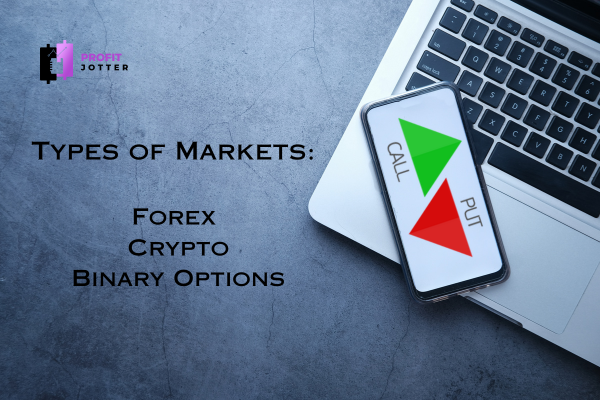Opening a forex trading account is the first step for anyone interested in earning through the most prominent global currency market.
Now, having a forex account means you are allowed to trade currency pairs, where one currency is exchanged for another.
This is done with hopes of profiting from the differences in the exchange rates of these currency pairs.
Opening a Forex trading account isn’t always easy, especially for a newbie.
This article will be offering a beginner-friendly, step-by-step guide to help you set up your Forex trading account.
Post Summary
The discussion of today will take this shape:
A click on any of the subheadings opens up its details.
Understanding Forex Trading Account
A forex trading account is an account that allows traders to buy and sell currency pairs.
When you open a forex trading account, you create a platform for trading currency pairs like EUR/USD or GBP/JPY.
Also, with the right broker, you can access various tools and resources that help you make better trading decisions.
Now, let’s see how to go about doing that.
How to Open a Forex Trading Account
i. Choose a Reliable Forex Broker
To open a forex trading account, you first need to select a forex broker.
Choosing the right broker determines how successful you will be in your trades and profits.
The broker is the middleman who provides access to the forex market, and you’ll execute your trades through its platform.
Here are some factors to consider when choosing a broker:
- Regulation: Ensure the broker is regulated by financial authorities like the Financial Conduct Authority (FCA) in the UK, the Commodity Futures Trading Commission (CFTC) in the US, etc. Some regulated brokers to work with include Exness, Exco, etc.
- Account Types: Many brokers offer different account types, such as standard accounts, mini accounts, and demo accounts. Each type has specific features, minimum deposit requirements, and trading conditions.
- Spreads and Fees: Different brokers have different spreads, commissions, and fees, which affect your overall profitability. Look for reasonable pricing.
- Platform and Tools: Make sure the broker’s trading platform is user-friendly and offers the features you need.
- Customer Support: Reliable customer support can be crucial when you encounter issues or have questions.
ii. Create an Account
Once you’ve chosen a broker to handle your trades, visit their website and look for an option to open an account.
This process usually involves a few simple steps.
→ Registration: Fill out an online form with your basic information, including your full name, address, email, and phone number.
→ Account Type: Choose the type of trading account that suits your goals. Beginners can start with a demo account to practice with virtual money before trading real funds.
→ Leverage Settings: Forex trading usually involves leverage, which means you can control a large amount of currency with a smaller deposit. While leverage can increase your profits, it also increases risk. It is wise to select an appropriate level for your experience.
→ Currency of the Account: Select the base currency for your account, typically USD, EUR, or GBP.
iii. Submit Identification Documents
Regulated brokers are required to verify your identity to comply with Know Your Customer (KYC) and anti-money laundering (AML) regulations.
So, be prepared to provide the following:
→ Proof of Identity: A passport, driver’s license, or national ID card.
→ Proof of Address: A utility bill, bank statement, or any official document that shows your address, issued within the past few months.
Verification usually takes a few hours to a few days.
Once verified, you’ll receive an email or notification confirming your account is active.
iv. Fund Your Account
After your account is verified, the next step is to deposit funds into it.
Most brokers offer several methods for funding your account, including:
→ Bank Transfers: This method is secure but may take a few days.
→ Credit/Debit Cards: Deposits are usually instant with this method.
→ E-Wallets: Many brokers accept e-wallets like PayPal, Neteller, and Skrill for fast deposits.
The minimum deposit may be different between brokers, but it’s common to start with $100 or more.
However, I advise that you deposit an amount you’re comfortable with and can afford to lose, especially for newbies.
v. Acquaint Yourself with the Trading Platform
Most brokers provide their exclusive platforms or make use of popular ones like MetaTrader 4 (MT4) or MetaTrader 5 (MT5).
These platforms offer various features for carrying out trades, analyzing the market, and managing your account.
While getting familiarized with the platform, you could do the following:
→ Practice with a Demo Account: Most brokers offer a demo account where you can practice trading without risking real money. This is a good opportunity to understand how trades work and to test strategies.
→ Explore the Platform’s Features: Learn how to use tools for charting, order placement, and setting stop-loss/take-profit levels. Familiarizing yourself with these features will make it easier to handle live trading.
vi. Develop a Trading Plan
Before making your first trade, an important thing to do is to create a trading plan.
This plan summarizes your trading goals, risk tolerance, and strategy.
A good trading plan includes:
→ Setting Profit Goals: Determine the profits you aim to achieve in a specific timeframe.
→ Risk Management: Decide how much you’re willing to risk per trade, typically 1-3% of your total capital.
→ Trading Strategy: Choose a strategy based on your analysis style, such as technical or fundamental analysis.
A trading plan helps to keep your emotions regulated and gives you an organized method for trading.
vii. Place Your First Trade
Once you feel ready, you can go to the trading platform and select the currency pair you want to trade.
Here’s a basic guide:
→ Select a Currency Pair: Choose a major currency pair like EUR/USD or GBP/USD if you’re new, as they usually have lower spreads and higher liquidity.
→ Decide on Trade Size: Choose the number of units you want to trade. Start with a small amount until you become more comfortable with trading.
→ Set Stop-Loss and Take-Profit Orders: These are simply price levels where your trade will automatically close if it reaches a certain loss (stop-loss) or profit (take-profit). This helps manage risk by reducing potential losses.
→ Monitor Your Trade: Watch the progress of your trade and close it when you’ve achieved your goal or if the market moves against your prediction.
viii. Review and Adjust Your Approach
Be ready to continuously learn if you are to go into Forex trading.
After each trade, take out time to review what worked and what didn’t.
Understand your trading strengths and weaknesses, as this will help you with your future strategies.
Conclusion
Opening a forex trading account is straightforward, but you need to be careful with your planning and truly understand the steps involved.
With a governed broker, a reliable trading platform, and a solid trading plan, you are set to begin your forex trading journey.
Have it in mind that forex trading involves risks, so always trade responsibly and continue learning as you progress.
GOODLUCK!!!




